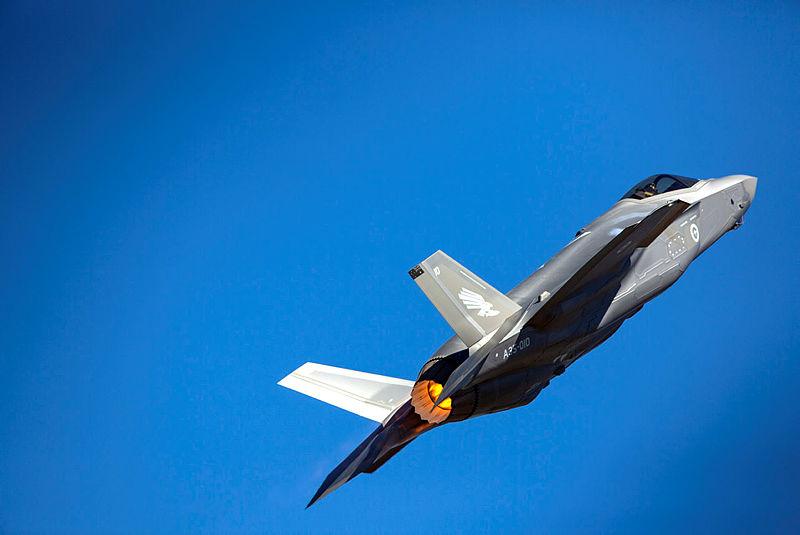The F-35 and future submarines are smart choices that need better explaining
Posted By Peter Jennings on March 1, 2019 @ 13:45

Columnist Robert Gottliebsen’s frequent articles about the supposed deficiencies of our future combat aircraft and submarines and the implication that this has for our position in the region are often wildly inaccurate.
Take the proposition [1] that Indonesia will have ‘air superiority over northern Australia’ in coming years because they are ‘buying even more lethal Russian aircraft’.
Here’s the reality: the Indonesian Air Force struggles to get its combat aircraft off the ground. Poor-quality purchases mean that Indonesia has fewer than a dozen each of American F-5 and F-16 fighter aircraft along with British Hawk, South Korean T-50 and Russian Su-27 aircraft in fighter and ground attack roles and the Brazilian Super Tucano aircraft in a ground attack role.
That’s six aircraft types from five different countries—a disastrous logistic support recipe for a country with a defence budget one-quarter of Australia’s.
Indonesia is now buying 11 Russian Su-35 Flanker multirole fighter aircraft, which will add further to the burden of maintaining a mixed fleet of aircraft with separate supply lines, different weapons and different sensors.
The Indonesians also have no air-to-air refuelling aircraft and no airborne early warning and control aircraft that coordinate the fighting capabilities of multiple aircraft.
This is a far cry from dominating northern Australian airspace. In fact, the Indonesian Air Force is struggling to maintain a capacity to move troops around its own archipelago, which is why Australia has assisted Jakarta with airframes and maintenance for its C-130 Hercules transport aircraft.
Most Southeast Asian countries that have bought Russian fighter aircraft find that the only long-term use for them is to put them up on sticks in front of bases. No rational decision-making process focused on designing a sensible air force would go Russian.
It seems that there is no story more enjoyable to an Australian audience than to be told that our defence equipment purchases are all duds. Mostly the criticisms are just nonsense, such as the statement from an American general that Gottliebsen is fond of quoting [2]: ‘The F-35 is not built as an air superiority platform. It needs the F-22.’
Contrary to the dogfight scenes in Top Gun, the F-35 will never be looping the loop overhead chasing Russian jets. It’s not designed for that. The F-35 is a stealth platform designed to fight as part of a joint military force bringing multiple capabilities to the scene. Most of the F-35’s ‘kills’ in a future war will never know they were targeted. The aircraft’s stealth capacity is 10 to 15 years ahead of that of the Chinese and Russian jets.
It should be a relief to Australians that successive governments and ministers and the defence establishments of the US, UK, Israel, Japan, South Korea and many others have concluded that the F-35 is far superior to any potential competitor.
Against that evidence, Gottliebsen arrays a persistent group of F-35 critics whose phone calls most journalists have learned not to take. Yes, there have been delays and cost increases as there are in any complex equipment project, but the F-35 is emerging as a superb aircraft.
And now to the submarines. Gottliebsen is impressed that Indonesia is buying three 1,400-tonne Type 209 Chang Bogo-class submarines from South Korea. Since the early 1980s, Indonesia has struggled to keep any of its three small submarines operational. At best, the Indonesian Navy has managed very short deployments.
Australia has an interest in helping Indonesia to develop a capacity to successfully operate submarines in the South China Sea. Three new submarines will help Jakarta police its sovereign interests. It only benefits Australia if Indonesia can control its sea and airspace, knowing what ships and aircraft are moving around the archipelago.
Australia, however, has no use for small, coastal submarines capable of staying underwater for a few days with basic weapons and sensors.
Australia’s future submarines are mind-blowingly expensive and will take a long time to deliver, but claims that the designs are disastrously flawed are just hot air. Nor will Australia face a gap in submarine capability as Gottliebsen claims. The Collins subs, which are formidable weapons, will be upgraded as long planned.
It’s beyond understanding why an Australian Defence Department that’s able to make such sensible decisions on equipment is so chronically unable to explain them. It’s not sustainable to treat Australia’s biggest ever defence investments like secret projects never to be discussed or explained.
In the absence of those explanations, we will continue to be subjected to an endless stream of critical commentary about the F-35 and future submarines that ranges from the mildly plausible to unhinged conspiracy theories. Left unchallenged, this damages our long-term defence and strategic interests.
The story of the Collins submarines offers an important lesson. The boats could never escape the false reputation that they were duds. Defence shouldn’t let a failure to explain its business create the same problems for the F-35 and the future submarines.
Article printed from The Strategist: https://aspistrategist.ru
URL to article: /the-f-35-and-future-submarines-are-smart-choices-that-need-better-explaining/
URLs in this post:
[1] the proposition: https://www.theaustralian.com.au/business/opinion/robert-gottliebsen/australias-submarine-project-shows-weve-learned-nothing/news-story/455dcad4046a3c60ed994fd9e461e521
[2] fond of quoting: https://www.theaustralian.com.au/business/opinion/robert-gottliebsen/joint-strike-fighter-a-dangerous-and-costly-mistake/news-story/1e4436f3979384725decc3e09e1f9d56
Click here to print.